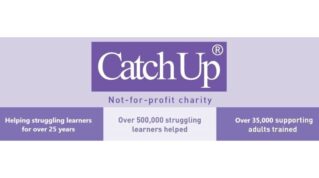| At Cognita, we believe every child has the right to flourish emotionally, socially and physically. That’s why wellbeing is the foundation of education in our 85 schools around the world.
It is exasperating when wellbeing and education are pitted against each other, says Beth Kerr, Cognita’s Group Director of Wellbeing. They are not mutually exclusive constructs but instead have a symbiotic relationship. To learn, you must be well, and wellbeing is enhanced by learning. We need to build solid foundations for wellbeing to allow students to flourish throughout their childhood, adolescence and beyond. We know that 50% of all mental health conditions develop by the age of 14, and 75% by the age of 24. During this time, children spend a considerable proportion of their time in school and so the opportunity for educators to positively influence their wellbeing is significant. Whist there is real passion among teachers about student wellbeing, significant change is difficult to achieve and as every week brings another new report about declining wellbeing, it highlights how pressing the issue is.
I, the schools group I’m a part of, and I’m sure every teacher reading this, believe that every child has the right to thrive emotionally, socially, and physically and that the education we provide must help them achieve this in a sustainable and meaningful way. We know from research that to be effective, schools must take a highly proactive approach to wellbeing – this needs to be a genuine culture that’s embedded, promoting ownership and prioritisation of wellbeing for all its students. Wellbeing can however be a rather nebulous term; it is not always clearly understood or defined and is often heaped on the shoulders of the already over stretched DSL’s. In our schools, we have a Be Well Charter which defines wellbeing – the sense of feeling content, socially, emotionally and physically flourishing which names 3 mental and 3 physical things that contribute to good wellbeing and health – sleep, diet and exercise, connecting, doing and giving. This way, every student knows that they need to prioritise these contributors regularly and consistently to promote positive and robust wellbeing, and staff are able to be specific about how to create and weave opportunities to reinforce these factors in their lessons and interactions with students. Together, these actions will make students ready to learn.
Wellbeing is everybody’s job, not somebody’s job. It should not fall under the remit of one person, but instead every member of staff should feel empowered to enhance student wellbeing in some way. By clearly defining wellbeing and the factors that impact it, you help everyone understand how they can contribute to wellbeing. It could be as simple as asking how a student is sleeping or encouraging them to intersperse revision with movement to increase focus and concentration, or more school wide drive to encourage wider participation in existing extra-curricular activities. Using science and research to explain the importance of these contributors can help students, parents and staff really appreciate that impact not only on their wellbeing but also on their creativity, memory and ability to learn. As we all reflect on the impact of the pandemic, I keep asking myself, what does the experience of the last 18 months mean for children’s wellbeing and how should we as educators be responding? But more importantly, what is the risk if we don’t prioritise wellbeing for all of our children? Wellbeing resources for educators and families are freely available here on cognita.com. |
Wellbeing: the foundation of education and everyone’s job

Sponsored

















Your thoughts